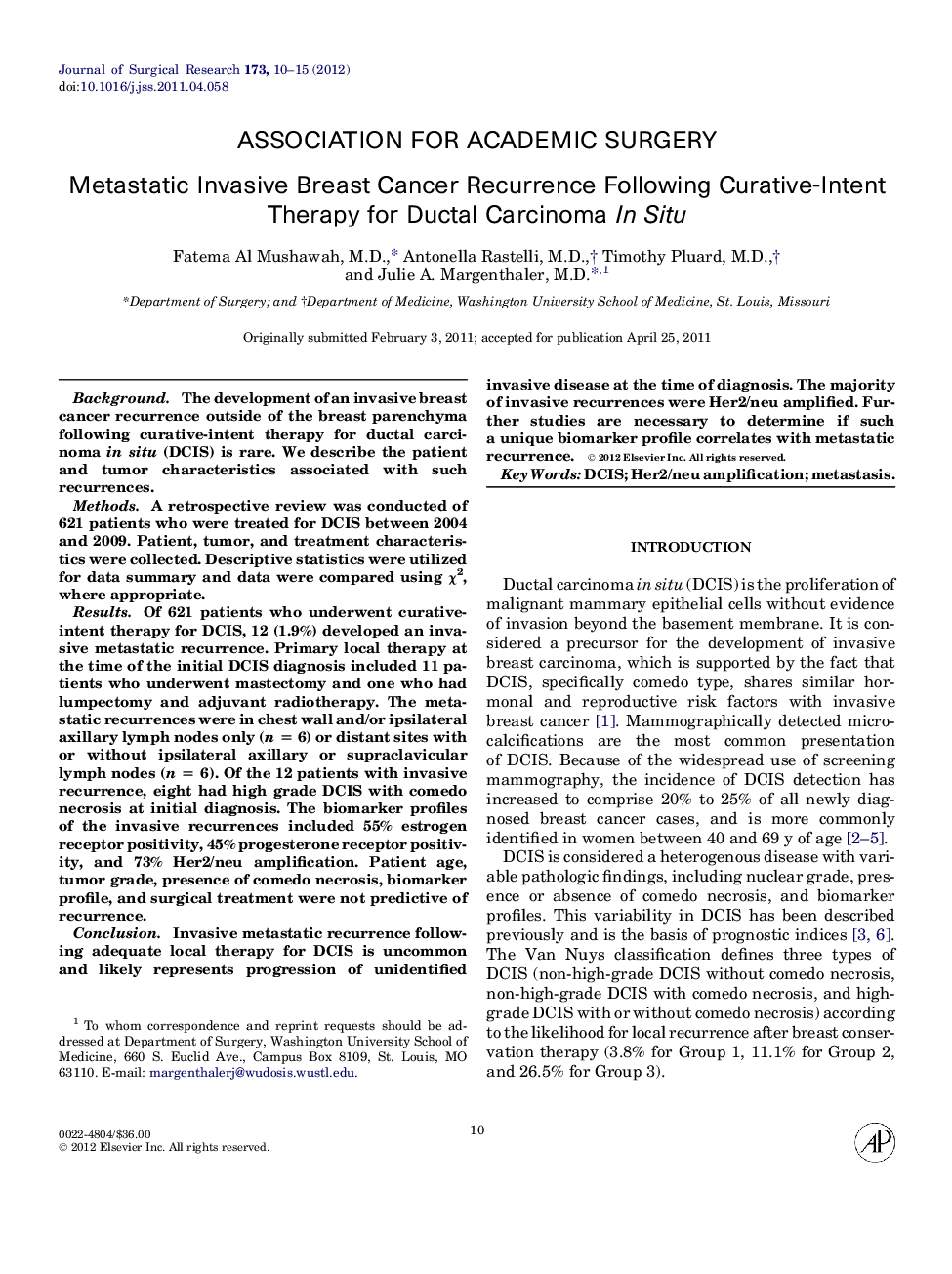| کد مقاله | کد نشریه | سال انتشار | مقاله انگلیسی | نسخه تمام متن |
|---|---|---|---|---|
| 4301523 | 1288440 | 2012 | 6 صفحه PDF | دانلود رایگان |

BackgroundThe development of an invasive breast cancer recurrence outside of the breast parenchyma following curative-intent therapy for ductal carcinoma in situ (DCIS) is rare. We describe the patient and tumor characteristics associated with such recurrences.MethodsA retrospective review was conducted of 621 patients who were treated for DCIS between 2004 and 2009. Patient, tumor, and treatment characteristics were collected. Descriptive statistics were utilized for data summary and data were compared using χ2, where appropriate.ResultsOf 621 patients who underwent curative-intent therapy for DCIS, 12 (1.9%) developed an invasive metastatic recurrence. Primary local therapy at the time of the initial DCIS diagnosis included 11 patients who underwent mastectomy and one who had lumpectomy and adjuvant radiotherapy. The metastatic recurrences were in chest wall and/or ipsilateral axillary lymph nodes only (n = 6) or distant sites with or without ipsilateral axillary or supraclavicular lymph nodes (n = 6). Of the 12 patients with invasive recurrence, eight had high grade DCIS with comedo necrosis at initial diagnosis. The biomarker profiles of the invasive recurrences included 55% estrogen receptor positivity, 45% progesterone receptor positivity, and 73% Her2/neu amplification. Patient age, tumor grade, presence of comedo necrosis, biomarker profile, and surgical treatment were not predictive of recurrence.ConclusionInvasive metastatic recurrence following adequate local therapy for DCIS is uncommon and likely represents progression of unidentified invasive disease at the time of diagnosis. The majority of invasive recurrences were Her2/neu amplified. Further studies are necessary to determine if such a unique biomarker profile correlates with metastatic recurrence.
Journal: Journal of Surgical Research - Volume 173, Issue 1, March 2012, Pages 10–15